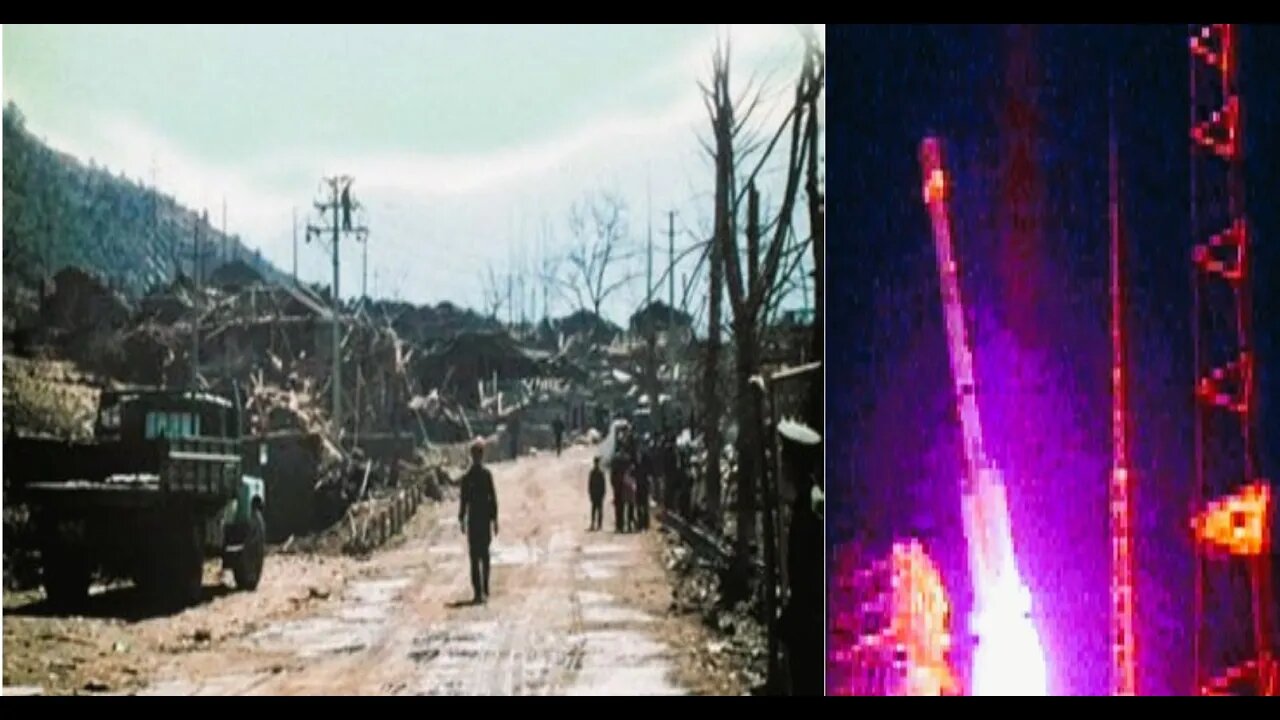Premium Only Content

1996 Xichang Launch Disaster- Rocket Flies Into Spectators
In October 1994, Bruce Campbell, a safety specialist with Astrotech Space Operations, based near Cape Canaveral, Florida, boarded an airliner in the Chinese city of Chengdu, capital of Sichuan province. He was heading south to the town of Xichang, in the remote mountainous region of the country bordering Burma and Vietnam. Along with a small group of American engineers, Campbell was there to help prepare for the launch, still more than a year away, of an American-built Intelsat satellite on a Chinese rocket.
In the 1990s, U.S. satellite operators were still scrambling to buy rides on European and Chinese launchers following NASA’s decision to ban commercial payloads from the space shuttle in the wake of the 1986 Challenger accident. The Chinese government, determined to succeed in a competitive business, offered Western customers prices they could not refuse. So in 1992, the Intelsat consortium contracted—for a reported $56 million, about half the cost of a European Ariane launch—to send one of its seventh-generation communications satellites, Intelsat-708, into space on China’s still-untested Long March 3B rocket.
Like many of his colleagues, Campbell had the background for working on sophisticated Western technology in remote and unfamiliar places. Born on a U.S. military base in Germany, he had followed in his father’s footsteps by enlisting in the Army, where he trained as a medic. After leaving the Army he got into the aerospace business, where his medical background proved useful in helping to design safety protocols for hazardous operations with spacecraft, including handling toxic propellants.
Campbell, whose company was subcontracted at the time to the satellite builder Space Systems Loral, recalls that first trip to Xichang. After boarding a Chinese Y-7 turboprop airliner (a copy of the Soviet Antonov-24), he sat down next to a young Chinese man. From his window seat, the man kept looking at the landing gear; when it retracted shortly after takeoff, he smiled broadly. “You seem to be very happy,” Campbell said, pointing at the window. “Yes, we studied this landing gear in engineering school,” the man replied. Campbell’s new acquaintance explained that he worked for the China Academy of Launch Vehicle Technology, which oversaw China’s Long March rockets. “Do you fly to Xichang often?” Campbell asked. “No,” the man replied. “It is too dangerous.” Squeezed between the mountains, the Xichang “airport” was actually a military runway housing a squadron of fighters guarding China’s southern border with Vietnam. To land in Xichang, civilian pilots had to perform a dangerous corkscrew maneuver, similar to the spiraling descent military pilots use in war zones.
The visiting U.S. engineers found infrastructure at the space center to be “primitive but workable,” as an Intelsat representative put it later. Intelsat had taken pains to soften the culture shock for its employees and contractors, paying for a top-to-bottom renovation of a small hotel, installing safety equipment, and even sending a pair of chefs from the San Francisco Marriott to cook for the Westerners.
Still, in the year leading up to the launch, Campbell and others were troubled by some of the things they saw and heard during their visits to Xichang. It wasn’t just the worry about espionage and the uncertainty over who might be listening in on them. (Campbell recalls that after he and his colleagues discussed over dinner the lack of a net on the hotel tennis court, a new net magically appeared.) It was more the Chinese attitude toward safety, which the Westerners thought was lax. Members of the U.S. team witnessed or heard from other colleagues about several close calls and accidents. The Intelsat-708 spacecraft was being prepared for launch at a satellite processing building several miles from the pad, which had been repaired after a solid-fuel rocket motor accidentally ignited and started bouncing around wildly in an enclosed room a few years earlier.
In January 1995, a Long March 2E rocket carrying a Hughes Apstar satellite exploded shortly after launch from Xichang. According to Campbell, horror stories from contractors who had witnessed the explosion prompted Intelsat and Loral managers to forbid employees from watching the liftoff from the roof of the hotel, which, along with a large residential area for Chinese employees of the center, was just three miles from the launch pad, and not far off the rocket’s flight path.
On the eve of the Intelsat-708 launch—scheduled for 2:51 a.m. on February 15, 1996—all personnel and guests at the hotel were ordered by Loral to go to the satellite preparation building, located south of the rocket’s expected flight path and separated from the launch pad by steep mountains. Several young local women from the hotel staff, exhausted by a long workday, pleaded to be allowed to stay behind to catch up on sleep, but Loral managers were unyielding—a decision that may have saved the workers’ lives.
-
 1:16:30
1:16:30
RiftTV
4 hours agoHow Blue Light is Turning You Gay | The Rift | Guest: Jack Kruse
10.6K5 -
 LIVE
LIVE
Eternal_Spartan
11 hours ago🟢 Eternal Spartan Plays Final Fantasy 7 Remake Intergrade | USMC Vet | Join the Best Chat on Rumble
63 watching -
 LIVE
LIVE
MissesMaam
1 hour ago*Spicy Sips* Friend Friday with Mally_Mouse and Friends!!! 💚✨ (part 2 stweam crashed)
63 watching -
 LIVE
LIVE
Tundra Tactical
3 hours agoCrits & Giggles Diablo IV On A Friday Night!
42 watching -
 LIVE
LIVE
JdaDelete
20 hours ago $0.01 earnedMetal Gear Solid Δ: Snake Eater | Part 1 - Pretty Good?
19 watching -
 5:14:52
5:14:52
Biscotti-B23
5 hours ago🔴 LIVE $5000 SINGLE ELIM TOURNAMENT 🏆 DEMON SLAYER HINOKAMI CHRONICLES 2
41 -
 LIVE
LIVE
SavageJayGatsby
21 hours agoFriend Friday | MicroWorks | $300 Weekly Goal for Spicy Bite Saturday | 250 Follower Goal!
37 watching -
 1:09:09
1:09:09
Edge of Wonder
5 hours agoCattle Mutilations, Chupacabra Sightings & NASA’s Voyager Goes Dark?
9.19K4 -
 LIVE
LIVE
Mally_Mouse
1 day agoFriend Friday!! 🎉 - Let's Play! - Microworks
63 watching -
 2:10:17
2:10:17
Quite Frankly
2 days agoHookah Special: Found Footage, Workplace Folly, More Cringe Music Vids (8/23/25 Re-Run)
14.8K6